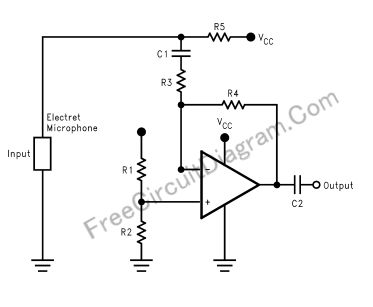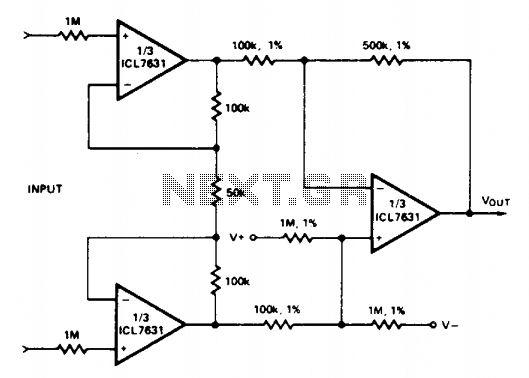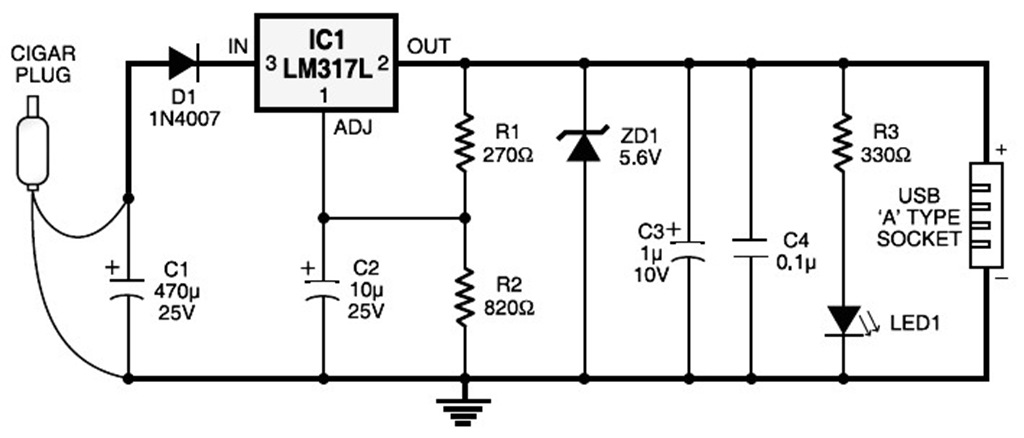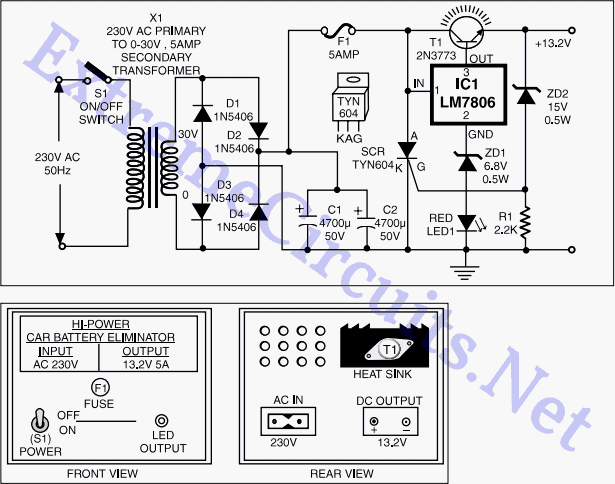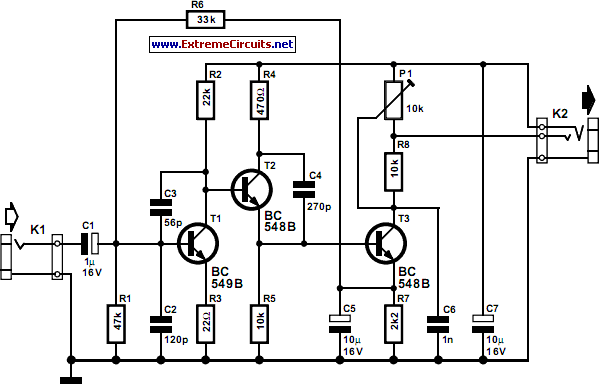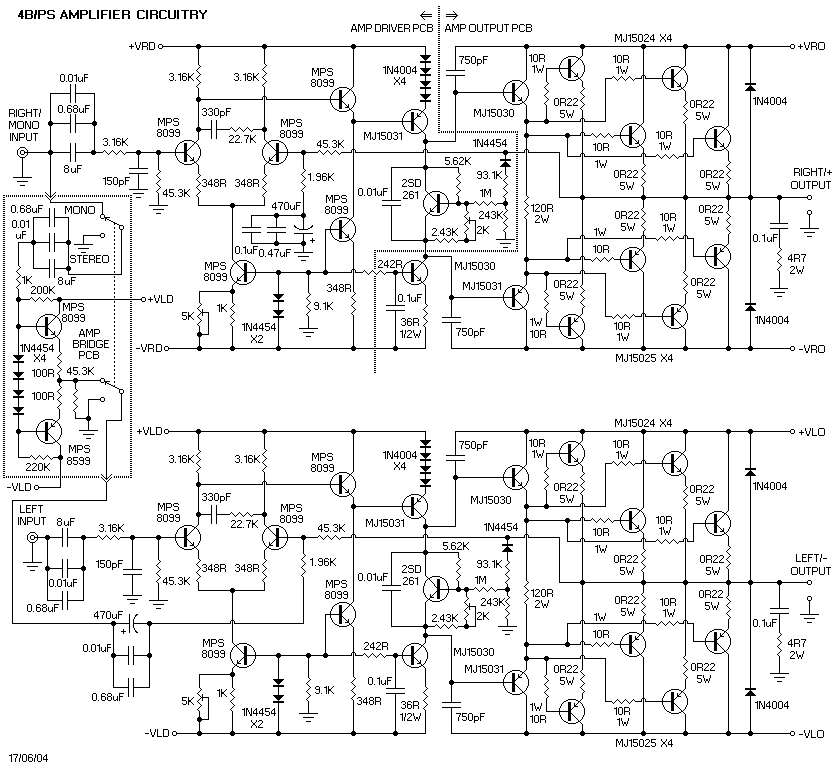
50W car audio amplifier schematic circuits
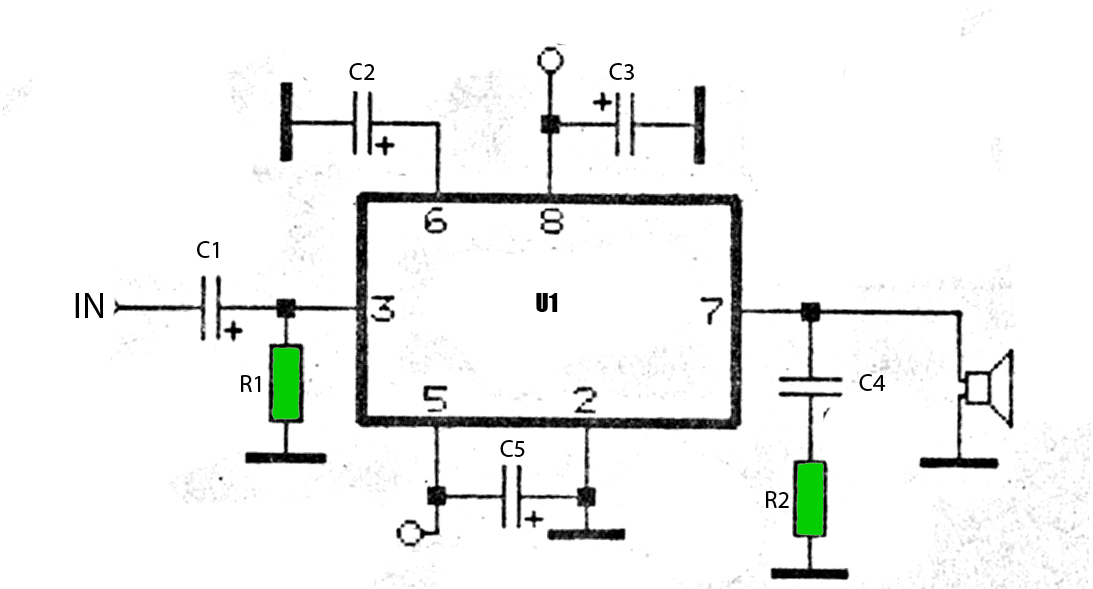
The car power amplifier utilizes the SI1050GL integrated circuit (IC) as the primary amplification component. It delivers an output power of 50 Watts at an 8-ohm mono impedance. The amplifier operates with a DC voltage of up to 25 Volts, requiring a car battery as the power source. A minimum battery voltage of 12 Volts is necessary to ensure optimal sound quality; lower voltage levels result in diminished audio performance. This circuit can be assembled according to a provided schematic.
The car power amplifier circuit employing the SI1050GL IC is designed to provide robust amplification for automotive audio systems. The SI1050GL is a high-performance amplifier IC that is optimized for use in mobile applications. It features a compact design, making it suitable for installation in various vehicle types.
The circuit's output stage is configured to deliver 50 Watts of power into an 8-ohm load, which is typical for automotive speakers. This power output is sufficient to drive most car speakers effectively, ensuring clear and loud audio reproduction. The amplifier operates efficiently within a voltage range that allows for compatibility with standard car battery systems, typically ranging from 12 Volts to 25 Volts DC.
To ensure optimal performance, the circuit design should include adequate filtering and decoupling capacitors to stabilize the power supply and minimize noise. Additionally, proper heat dissipation measures, such as a heat sink, should be implemented to prevent thermal overload during extended use.
The input stage of the amplifier can be connected to the car's audio source, such as a head unit or an auxiliary input, allowing for seamless integration with existing audio systems. It is advisable to incorporate a volume control mechanism to adjust the output level according to the user's preference.
Overall, the SI1050GL-based car power amplifier circuit offers a practical solution for enhancing in-vehicle audio experiences, providing high power output and reliability in a compact form factor. Careful attention to component selection and layout will further enhance the performance and longevity of the amplifier.Car power amplifier uses SI1050GL IC as the main amplifier. The output power 50 Watt 8 ohm mono impedance. Up to 25 Volt DC voltage. with source voltage of this amplifier car battery has to work. Minimum of 12 Volt battery voltage, less than a sound or audio is issued less than the maximum and less good. You can assemble this circuit amplifier wit h a schema like this. 🔗 External reference
The car power amplifier circuit employing the SI1050GL IC is designed to provide robust amplification for automotive audio systems. The SI1050GL is a high-performance amplifier IC that is optimized for use in mobile applications. It features a compact design, making it suitable for installation in various vehicle types.
The circuit's output stage is configured to deliver 50 Watts of power into an 8-ohm load, which is typical for automotive speakers. This power output is sufficient to drive most car speakers effectively, ensuring clear and loud audio reproduction. The amplifier operates efficiently within a voltage range that allows for compatibility with standard car battery systems, typically ranging from 12 Volts to 25 Volts DC.
To ensure optimal performance, the circuit design should include adequate filtering and decoupling capacitors to stabilize the power supply and minimize noise. Additionally, proper heat dissipation measures, such as a heat sink, should be implemented to prevent thermal overload during extended use.
The input stage of the amplifier can be connected to the car's audio source, such as a head unit or an auxiliary input, allowing for seamless integration with existing audio systems. It is advisable to incorporate a volume control mechanism to adjust the output level according to the user's preference.
Overall, the SI1050GL-based car power amplifier circuit offers a practical solution for enhancing in-vehicle audio experiences, providing high power output and reliability in a compact form factor. Careful attention to component selection and layout will further enhance the performance and longevity of the amplifier.Car power amplifier uses SI1050GL IC as the main amplifier. The output power 50 Watt 8 ohm mono impedance. Up to 25 Volt DC voltage. with source voltage of this amplifier car battery has to work. Minimum of 12 Volt battery voltage, less than a sound or audio is issued less than the maximum and less good. You can assemble this circuit amplifier wit h a schema like this. 🔗 External reference
